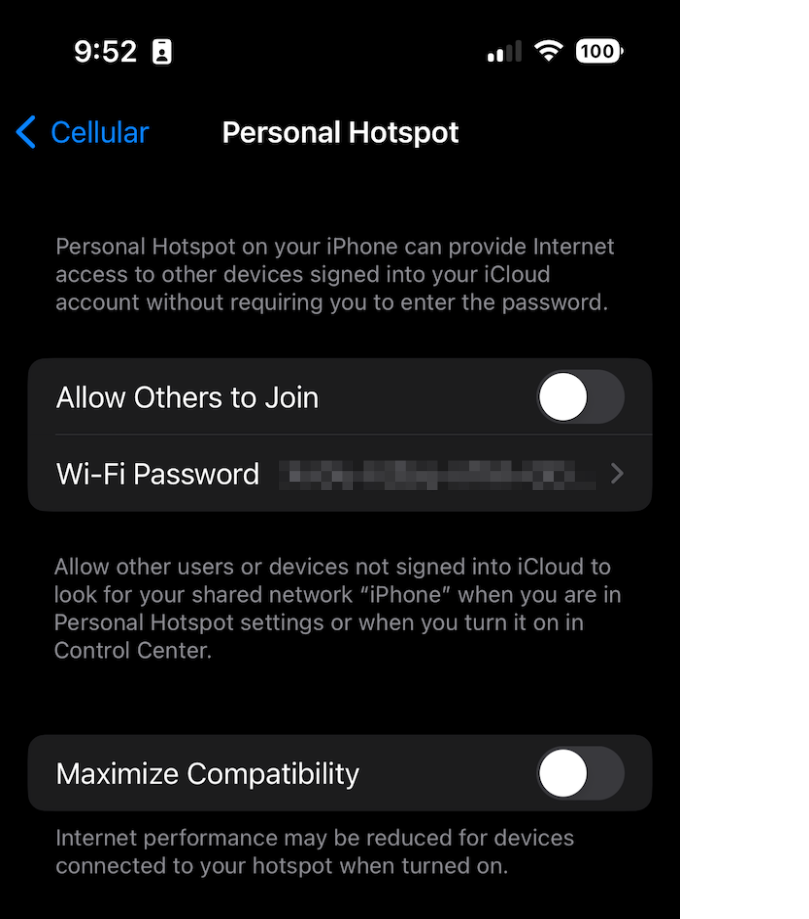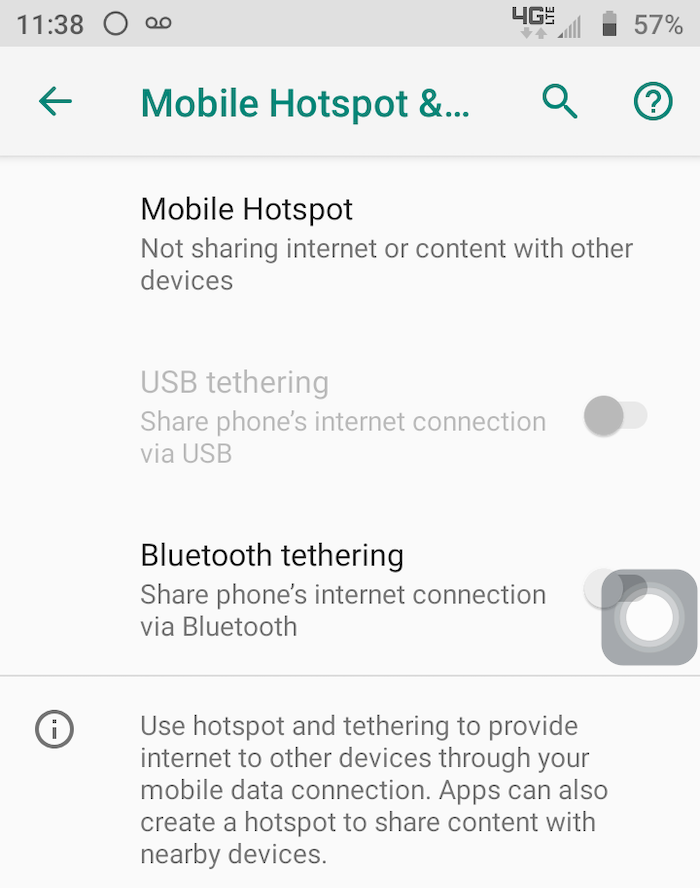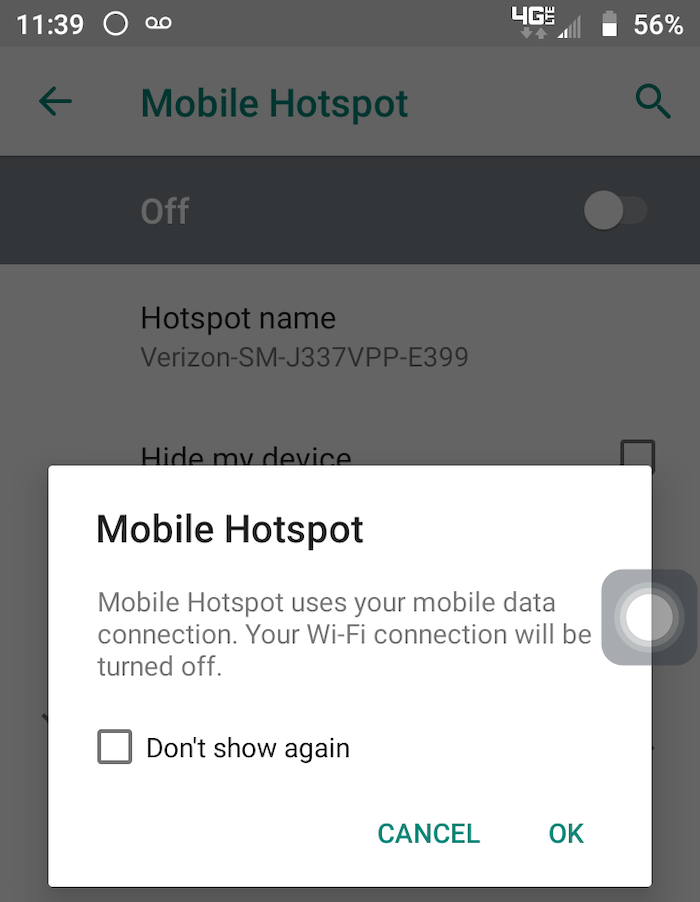Advertiser Disclosure
All About Cookies is an independent, advertising-supported website. Some of the offers that appear on this site are from third-party advertisers from which All About Cookies receives compensation. This compensation may impact how and where products appear on this site (including, for example, the order in which they appear).
All About Cookies does not include all financial or credit offers that might be available to consumers nor do we include all companies or all available products. Information is accurate as of the publishing date and has not been provided or endorsed by the advertiser.
Editorial Policy
The All About Cookies editorial team strives to provide accurate, in-depth information and reviews to help you, our reader, make online privacy decisions with confidence. Here's what you can expect from us:
- All About Cookies makes money when you click the links on our site to some of the products and offers that we mention. These partnerships do not influence our opinions or recommendations. Read more about how we make money.
- Partners are not able to review or request changes to our content except for compliance reasons.
- We aim to make sure everything on our site is up-to-date and accurate as of the publishing date, but we cannot guarantee we haven't missed something. It's your responsibility to double-check all information before making any decision. If you spot something that looks wrong, please let us know.
Imagine you're traveling in a remote area and you receive an alert about an important work project that needs immediate attention. You need internet access for your laptop, but no public Wi-Fi options are available or you don't have a virtual private network (VPN) to keep your connection safe.
Now, suppose you have a cellphone plan with hotspot data and a signal. In that case, you're in luck because your phone can become a mobile hotspot connecting your laptop or tablet to the internet.
A mobile hotspot is a movable access point that can share a phone's cellular connection signal with a compatible device, connecting the device to the internet through a process known as tethering.
With a quick visit to your phone's settings or a swipe down on most newer devices and a tap engaging the mobile hotspot option, you can transform most Android or iPhones into personalized local Wi-Fi connections.
Learn how to break dependence on existing Wi-Fi networks and enjoy the freedom and convenience of using your cellphone as a mobile hotspot to stay connected on the go.
How to use your cellphone as a hotspot
How to use a hotspot on iPhone or iPad
How to use a hotspot on an Android device
What phone plan is best for Wi-Fi hotspots?
Mobile hotspot FAQs
Bottom line
What is a mobile hotspot?
A mobile hotspot is a wireless connection that can move with a device such as a cellphone or dedicated mobile hotspot device. Wi-Fi hotspot devices do have advantages such as faster connection speeds and longer battery life than cellphones, but they can cost from $95 to $799 just for the device, which doesn’t necessarily include a service plan and data.
Cell phone mobile hotspots can offer a simpler, more affordable option as they come built into a phone's hardware. Cellphone hotspots are wireless connection points created by channeling a phone's cellular internet connection signal to other devices such as laptops, tablets, or smart TVs. Customers with hotspot data plans can enjoy the convenience and safety of their phone's connection signal on compatible devices anywhere they have coverage.
Wireless hotspots can come in handy when:
- You’re traveling either overseas or domestically
- You need quick internet access in a remote area where other Wi-Fi connections aren't available
- You want to avoid the security risks associated with using public Wi-Fi and use your phone provider's safer internet connection
- You need a larger, better-equipped device for a specific task but want to continue using your phone's cellular connection signal
Turning your cellphone into a mobile hotspot offers many advantages, but keep in mind mobile hotspot usage tends to increase the speed at which your phone's battery drains. Be sure to monitor your phone's battery, keep a charger handy, and always know the location of the nearest charging outlet.
How to use your cellphone as a hotspot
Today, most Androids and iPhones offer plans that allow you to share your mobile hotspot through either Wi-Fi, Bluetooth, or USB connections.
Some Android carriers limit or charge extra for using a mobile hotspot, so check with your provider regarding its hotspot data policy before proceeding.
How to use a hotspot on iPhone or iPad
If you want to use your Apple device as a hotspot, please follow the steps below to activate your device's mobile hotspot option.
1. To turn on your iOS device's hotspot, go to Settings, Cellular, Personal Hotspot or navigate to Settings, and then Personal Hotspot. Tap the slider to "Allow Others to Join." If no personal hotspot option appears, check with your carrier to see if your plan includes a personal hotspot option.

2. After the personal hotspot activates, be ready to verify the Wi-Fi password and model of phone.
3. On the compatible device you want to connect, go to settings or internet access options (usually located in the upper right corner of the taskbar) and find your phone's name on the list of Wi-Fi options. Select your phone's connection option and be prepared to enter a password if required.

How to use a hotspot on an Android device
Android phone owners can choose from Wi-Fi, Bluetooth, or USB connections to create a hotspot and tether compatible devices. Activating and using a hotspot is like creating a VPN on your Android device. Remember that the steps for activating and connecting a hotspot may differ slightly based on the make and model of each device.
- NordVPN: Nord is our top recommended VPN for Android. It's a bit more expensive than the other services we listed, but it provides fast connections, doesn't leak your data, and can easily unblock geo-restrictions.
Get NordVPN | Read Our NordVPN Review - Private Internet Access: With the PIA Android app, you don't need to sacrifice speed to protect your data. Its Android app is user-friendly and can quickly connect to servers worldwide.
Get Private Internet Access | Read Our Private Internet Access Review - IPVanish: IPVanish offers unlimited simultaneous connections and an easy-to-use Android app. It's a great option if you need an affordable VPN that covers more than just your Android phone.
Get IPVanish | Read Our IPVanish Review
Android version 9+
Below is a list of general steps for turning on your newer Android (version 9 and up) hotspot:
- Swipe down from the top of your phone's screen.
- Tap Hotspot to engage, and if the Hotspot option isn't visible, tap Edit at the bottom left and drag Hotspot into quick settings.
Android version 8 and older
Below is a list of general steps (these may differ slightly for different models) for locating and activating an older Android's hotspot:
1. Go to Settings and then Network & internet.

2. Proceed to Mobile Hotspot & tethering, then select the Mobile Hotspot option.

3. Tap the Mobile Hotspot setting to activate (and hit OK on some models).

See the steps below for setting up and using a hotspot on Samsung, Google Pixel, Motorola, LG, and Huawei models.
Samsung
- Go to Settings, then select Connections.
- Choose the Mobile hotspot/ tethering option.
- Turn on the Mobile hotspot option.
- Find your phone's name on the list of Wi-Fi connection options and select it to connect.
- Be ready to enter a network password if necessary.
Google Pixel
- Go to Settings and tap Network/internet HS/tethering.
- Select the Wi-Fi hotspot option and activate using a password if necessary.
- Find your phone on the Wi-Fi connections list and select it.
- Click to connect and enter a password if necessary.
Motorola
- Turn off Wi-Fi by going to Settings, Wireless networks, and switching Wi-Fi to off
- Go to Settings, then select More
- Choose the Tethering and portable hotspot option, then select Portable Wi-Fi hotspot and turn it on.
- Find your phone on the Wi-Fi connections list and select it.
- Click to connect and enter a password if necessary.
LG
- Go to Settings, then select the Network/internet option.
- Choose the Tethering option and tap Mobile hotspot to turn on your hotspot.
- Find your phone on the Wi-Fi connections list and select it.
- Click to connect and enter a password if necessary.
Huawei
- Go to Settings and select Mobile network.
- Choose the Personal hotspot option and turn it on.
- Find your phone on the Wi-Fi connections list and select it.
- Click to connect and enter a password if necessary.
What phone plan is best for Wi-Fi hotspots?
To use your cellphone as a hotspot, you’ll need to select a phone provider plan that includes or allows the addition of hotspot data. Many carrier plans include sufficient data that is both hotspot-friendly and capable of delivering an acceptable work-from-home internet speed for today’s remote workforce.
Plan prices vary along with how many gigabytes of data each package includes. Here’s a list of some options:
5 cellphone plans with hotspot data
| Cellphone plan | Monthly price | Hotspot data |
| Visible | $30/mo for 1 line | Unlimited with speeds up to 5 Mbps |
| Metro by T-Mobile $60/mo Unlimited | $60/mo for 1 line | 20 GB of 4G/5G hotspot data |
| T-Mobile Magenta Max | $85/mo for 1 line | 40 GB of 4G/5G hotspot data (Slows to 3G speeds afterward) |
| AT&T Unlimited Premium | $85/mo for 1 line | 50 GB of 4G/5G hotspot data (Slows to 128 Kbps afterward) |
| Verizon Wireless 5G Get More | $90/mo for 1 line | 50 GB of 4G/5G hotspot data (Slows to 600 Kbps–3 Mbps speeds afterward) |
Mobile hotspot FAQs
Does it cost extra to use your phone as a hotspot?
With most major carriers, using your phone as a hotspot doesn't cost any extra because the data comes out of a prepaid plan’s data package at no additional cost.
Most plans cap the amount of general data allotted to hotspot usage. When this amount runs out, you’ll no longer have a hotspot option, or the connection speed will be significantly slower. In this case, if you still want a hotspot, you can buy additional hotspot data or wait for the next cycle when your plan's data renews.
Can I use my phone as a hotspot for my laptop?
Yes, you can connect laptops and other compatible devices like tablets, iPads, and smart TVs to mobile phone hotspots.
Any device capable of tethering to your phone by Wi-Fi, Bluetooth, or USB can share your phone's mobile cellular connection signal.
Does a hotspot use data or Wi-Fi?
Mobile hotspots do use mobile data from your provider's service plan when acting as a portable Wi-Fi connection to access the internet from compatible devices. But most cell phone plans that feature a mobile hotspot come with a separate hotspot data allotment, so you may not need to worry about guzzling your cell phone's data.
Remember that hotspots can use significant amounts of data depending on your activity — anywhere from 60 MB to 800 MB of data each hour. For example, using your phone as a hotspot to download a song requires a minimal amount of data compared to using a hotspot to run an hour-long Zoom meeting.
Bottom line
Is public Wi-Fi unavailable, or are you concerned about the safety of a public connection? No problem, because now you know how to turn your cellphone into a portable Wi-Fi hotspot capable of sharing a safe internet connection signal with compatible devices.
The freedom to safely connect anywhere cellular coverage exists is as simple as finding and activating your phone's mobile hotspot and then selecting your device's name from a list of available Wi-Fi connections.
For customers of most major cell carriers, having enough monthly data for a moderate amount of mobile hotspot usage isn't a worry. However, if you just want to protect your smartphone while using public Wi-Fi, check out our guides to the best VPNs for Android and the best VPNs for iPhone.
-
High-quality VPN offering safety and speed
-
Loads of servers for multiple connection options
-
Works with popular streaming services, including Netflix
-
Too many confusing plans





